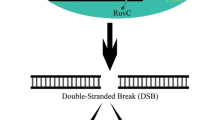Abstract
The aberrantly expressed microRNAs (miRNAs) including miR-200a-3p have been reported in the brains of Alzheimer’s disease (AD) patients in recent researches. Nevertheless, the role of miR-200a-3p in AD has not been characterized. The purpose of this study was to examine whether miR-200a-3p regulated β-Ameyloid (Aβ)-induced neuronal apoptosis by targeting SIRT1, a known anti-apoptotic protein. An increased level of miR-200a-3p and a decreased level of SIRT1 in the hippocampus of APPswe/PSΔE9 mice (a model for AD) were observed. To construct an in vitro cell model of AD, PC12 cells were cultured in presence of Aβ25-35. The results of flow cytometry analysis showed that the apoptosis rate and cleaved-caspase-3 expression in PC12 cells exposed to Aβ25-35 were remarkably increased, but the apoptosis rate and cleaved-caspase-3 activity were decreased when cells were transfected with anti-miR-200a-3p. On the other hand, MTT assay showed that the cell survival rate was increased in the Aβ25-35 + anti-miR-200a-3p group compared with the Aβ25-35 + anti-miR-NC group. Dual-luciferase reporter gene assay validated the predicted miR-200a-3p binding sites in the 3′-UTR of SIRT1 mRNA. In addition, downregulation of SIRT1 promoted Aβ25-35-induced neuronal apoptosis and cleaved-caspase-3 level in PC12 cells, whereas anti-miR-200a-3p reversed these effects. Knockdown of SIRT1 decreased the inhibitory effect of Aβ25-35 on cell viability, while anti-miR-200a-3p attenuated this effect. Overall, the results suggest that suppression of miR-200a-3p attenuates Aβ25-35-induced apoptosis in PC12 cells by targeting SIRT1. Thus, miR-200a-3p may be a potential therapeutic target for treatment of AD.




Similar content being viewed by others
References
Alzheimer’s A 2015 Alzheimer’s disease facts and figures. Alzheimers Dement. 11 332–384
Benilova I, Karran E and De Strooper B 2012 The toxic A [beta] oligomer and Alzheimer’s disease: an emperor in need of clothes. Nat. Neurosci. 15 349–357
Bordone L and Guarente L 2005 Calorie restriction, SIRT1 and metabolism: understanding longevity. Nat. Rev. Mol. Cell Biol. 6 298–305
Brunet A, Sweeney LB, Sturgill JF, et al. 2004 Stress-dependent regulation of FOXO transcription factors by the SIRT1 deacetylase. Science. 303 2011–2015
Chen Z, Li Y, Zhang H, et al. 2010 Hypoxia-regulated microRNA-210 modulates mitochondrial function and decreases ISCU and COX10 expression. Oncogene. 29 4362–4368
Denu JM 2005 The Sir2 family of protein deacetylases. Curr. Opin. Chem. Biol. 9 431–440
Eades G, Yang M, Yao Y, et al. 2011 miR-200a regulates Nrf2 activation by targeting Keap1 mRNA in breast cancer cells. J. Biol. Chem. 286 40725–40733
Gao J, Wang WY, Mao YW, et al. 2010 A novel pathway regulates memory and plasticity via SIRT1 and miR-134. Nature. 466 1105–1109
Hébert SS, Horré K, Nicolaï L, et al. 2008 Loss of microRNA cluster miR-29a/b-1 in sporadic Alzheimer’s disease correlates with increased BACE1/beta-secretase expression. Proc. Natl. Acad. Sci. U S A. 105 6415–6420
Izaurralde E 2015 Breakers and blockers—miRNAs at work. Science. 349 380–382
Kiko T, Nakagawa K, Tsuduki T, et al. 2014 MicroRNAs in plasma and cerebrospinal fluid as potential markers for Alzheimer’s disease. J. Alzheimers Dis. 39 253–259
Klementiev B ,Novikova T, Novitskaya V, et al. 2007 A neural cell adhesion molecule–derived peptide reduces neuropathological signs and cognitive impairment induced by Aβ 25-35. Neuroscience. 145 209–224
Kume S, Haneda M, Kanasaki K, et al. 2007 SIRT1 inhibits transforming growth factor β-induced apoptosis in glomerular mesangial cells via Smad7 deacetylation. J. Biol. Chem. 282 151–158
Lau P, Bossers K, Janky R, et al. 2013 Alteration of the microRNA network during the progression of Alzheimer’s disease. EMBO Mol. Med. 5 1613–1634
Lema C and Cunningham MJ 2010 MicroRNAs and their implications in toxicological research. Toxicol. Lett. 198 100–105
Liu X, Yu J, Jiang L, Wang A, et al. 2009 MicroRNA-222 regulates cell invasion by targeting matrix metalloproteinase 1 (MMP1) and manganese superoxide dismutase 2 (SOD2) in tongue squamous cell carcinoma cell lines. Cancer Genomics Proteomics. 6 131–139.
Lukiw WJ 2007 Micro-RNA speciation in fetal, adult and Alzheimer’s disease hippocampus. Neuroreport. 18 297–300
Pfister JA, Ma C, Morrison BE, et al. 2008 Opposing effects of sirtuins on neuronal survival: SIRT1-mediated neuroprotection is independent of its deacetylase activity. PLoS ONE. 3 e4090
Revollo JR and Li X 2013 The ways and means that fine tune Sirt1 activity. Trends Biochem. Sci. 38 160–167
Shankar GM and Walsh DM 2009 Alzheimer’s disease: synaptic dysfunction and Abeta. Mol. Neurodegener. 4 48
Sun Q, Jia N, Wang W, et al. 2014 Activation of SIRT1 by curcumin blocks the neurotoxicity of amyloid-β 25–35 in rat cortical neurons. Biochem. Biophys. Res. Commun. 448 89–94
Tanno M, Kuno A, Yano T, et al. 2010 Induction of manganese superoxide dismutase by nuclear translocation and activation of SIRT1 promotes cell survival in chronic heart failure. J. Biol. Chem. 285 8375–8382
Wang WX, Rajeev BW, Stromberg AJ, et al. 2008 The expression of microRNA miR-107 decreases early in Alzheimer’s disease and may accelerate disease progression through regulation of beta-site amyloid precursor protein-cleaving enzyme1. J. Neurosci. 28 1213–1223
Wang X, Su B, Siedlak SL, et al. 2008 Amyloid-β overproduction causes abnormal mitochondrial dynamics via differential modulation of mitochondrial fission/fusion proteins. Proc. Natl. Acad. Sci. U S A. 105 19318–19323
Yamakuchi M, Ferlito M and Lowenstein CJ 2008 miR-34a repression of SIRT1 regulates apoptosis. Proc. Natl. Acad. Sci. U S A. 105 13421–13426
Zhang Y, Liu C, Wang J, et al. 2016 MiR-299-5p regulates apoptosis through autophagy in neurons and ameliorates cognitive capacity in APPswe/PS1dE9 mice. Sci. Rep. 6 24566
Zhu H, Yang Y, Wang Y, et al. 2011 MicroRNA-195 promotes palmitate-induced apoptosis in cardiomyocytes by down-regulating Sirt1. Cardiovasc. Res. 92 75–84
Acknowledgements
This work is supported by the Natural Science Foundation of China (81401062, 81601123), and Grant from the Education Department of Henan Province (15A310003).
Author information
Authors and Affiliations
Corresponding author
Additional information
Corresponding editor: Ullas Kolthur
Rights and permissions
About this article
Cite this article
Zhang, QS., Liu, W. & Lu, GX. miR-200a-3p promotes β-Amyloid-induced neuronal apoptosis through down-regulation of SIRT1 in Alzheimer’s disease. J Biosci 42, 397–404 (2017). https://doi.org/10.1007/s12038-017-9698-1
Received:
Accepted:
Published:
Issue Date:
DOI: https://doi.org/10.1007/s12038-017-9698-1




